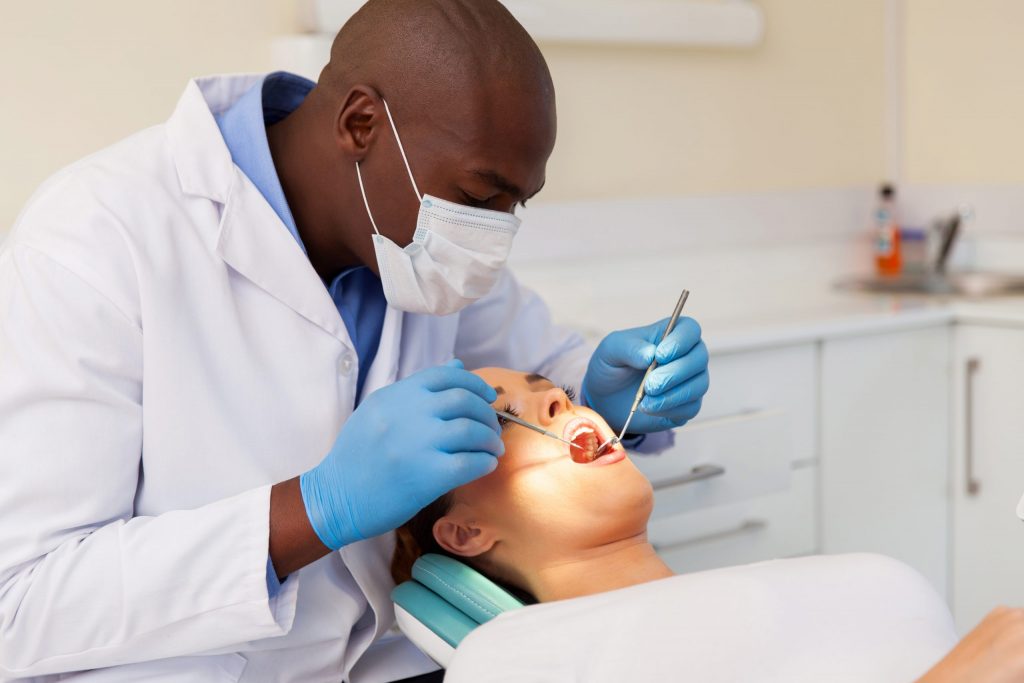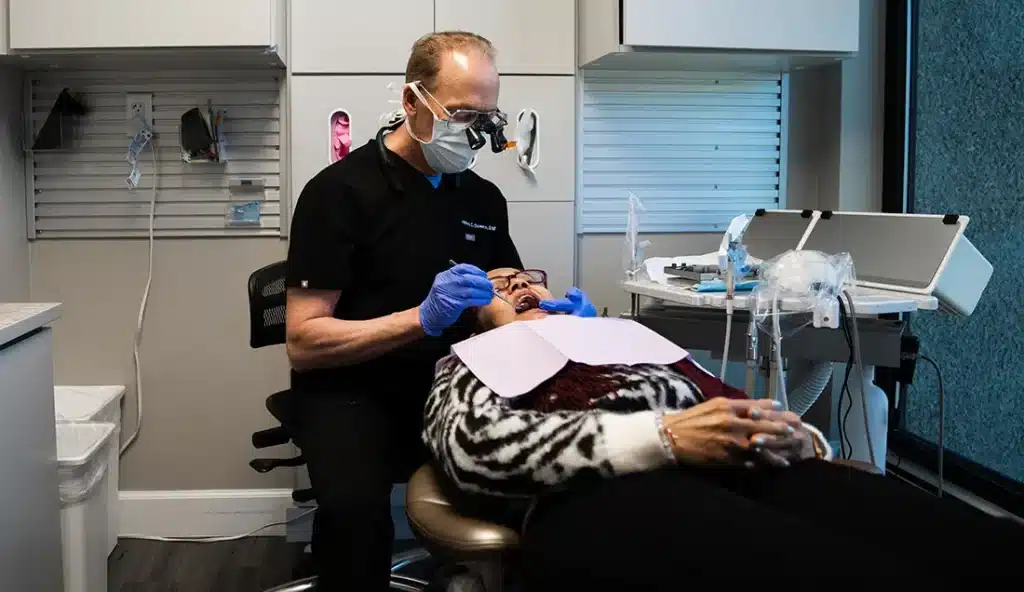Typical Questions Concerning Oral Veneers Responded To
Oral veneers have come to be a significantly popular alternative for those seeking to boost their smiles, yet numerous individuals continue to be unsure regarding various elements of their usage. Secret questions often arise pertaining to the application process, longevity, and potential risks associated with these aesthetic improvements. The difference between porcelain and composite veneers can substantially affect one's choice. As we discover these typical questions, it ends up being important to take into consideration not only the benefits however likewise the implications of deciding for dental veneers in quest of a much more positive appearance. What elements should one evaluate prior to making such a decision?
What Are Dental Veneers?
Dental veneers are thin, personalized coverings crafted from porcelain or composite resin that are designed to cover the front surface of teeth. These oral prosthetics serve both functional and aesthetic purposes, giving a solution for various oral flaws, consisting of staining, chips, voids, and misalignment. By sticking to the teeth, veneers can dramatically enhance the total look of a smile, creating an extra uniform and attractive look.
Porcelain veneers are specifically preferred for their natural clarity and stain resistance, making them a perfect option for people seeking lasting outcomes. On the other hand, composite resin veneers are normally more economical and can be applied in a solitary visit, but they may not provide the same durability as porcelain choices.
The choice to opt for oral veneers typically comes from a wish for aesthetic enhancement, yet patients ought to additionally think about elements such as the long life of the product, maintenance needs, and the possible requirement for tooth reduction (Porcelain Veneers Washington DC). Eventually, oral veneers represent a effective and flexible remedy for accomplishing a radiant smile, catering to individual aesthetic demands while promoting self-confidence and self-esteem
How Are Veneers Applied?
The application procedure for veneers needs cautious preparation and precision to make certain optimum results. The procedure normally starts with a detailed appointment, where the dental practitioner evaluates the client's oral health and wellness, discusses wanted end results, and identifies the ideal kind of veneers, whether porcelain or composite material.
As soon as the treatment plan is developed, the dental expert prepares the teeth by removing a slim layer of enamel, generally concerning 0.5 mm to 1 mm, to fit the veneer. This action is critical as it guarantees a correct fit and avoids the veneers from showing up large - Porcelain Veneers Washington DC. After preparation, impacts of the teeth are required to create custom-made veneers that match the person's unique oral framework and visual preferences
While the irreversible veneers are being fabricated in a dental laboratory, momentary veneers might be positioned to shield the prepared teeth. Once the long-term veneers prepare, the dentist will meticulously bond them to the teeth making use of a strong oral adhesive. Final changes are made to make sure correct placement and bite, complied with by brightening for an all-natural look. The process finishes in a follow-up appointment to monitor the veneers' fit and the patient's contentment with their new smile.
What Are the Advantages?

Furthermore, veneers are known for their resilience and resistance to discoloring contrasted to natural teeth. Made from high-grade products such as porcelain or composite material, they can keep their look for years with correct treatment. This longevity makes them a practical investment in one's oral appearance.
In enhancement to aesthetic renovations, veneers can likewise contribute to improved oral health. By covering damaged or deteriorated teeth, they can supply extra assistance and defense, aiding to avoid additional degeneration or damage. This protective aspect can minimize more helpful hints the demand for a lot more comprehensive oral treatments in the future.

Exactly How Lengthy Do They Last?
With proper treatment and maintenance, oral veneers can last anywhere from 10 to 15 years, making them a resilient option for enhancing one's smile. The longevity of veneers mainly depends on the material utilized, the high quality of the initial positioning, and the person's adherence to oral hygiene techniques.
Porcelain veneers are understood for their durability and resistance to discoloration, normally lasting closer to the 15-year mark when looked after suitably. Composite veneers, while more budget-friendly, may call for substitute sooner, commonly within 5 to one decade as a result of their sensitivity to put on and discoloration.

Furthermore, wearing a mouthguard during sports or nighttime can give added security. Eventually, while veneers offer a substantial visual improvement, their longevity is considerably influenced by the commitment to proper oral care and routine examinations with an oral professional.
Exist Any Kind Of Risks?
Thinking about the transformative results of dental veneers, it is necessary to recognize the possible dangers related to their application. While veneers can boost the look of teeth, the treatment involves the removal of a slim layer of enamel, which can enhance tooth sensitivity and susceptability to degeneration.
One substantial risk is the opportunity of inappropriate positioning or fitting, leading to discomfort, bite imbalance, or even damage to the underlying tooth structure. Furthermore, if the veneers are not maintained appropriately, they can end up being tarnished or cracked with time, demanding substitute.
Patients might likewise experience allergies to the products utilized in the veneers, especially if they have level of sensitivities to certain dental composites. In addition, while veneers are resilient, they are not indestructible; extreme force from grinding or clenching can bring about fractures.
It is essential for patients to seek advice from a qualified dental expert to examine their individual threats and to comply with aftercare directions carefully. By recognizing these risks, people can make enlightened decisions concerning their navigate to this site dental veneer therapy and ensure the longevity and success of their improvements.
Conclusion
In summary, dental veneers represent an important cosmetic service for enhancing smiles, with factors to consider concerning their application, benefits, longevity, and connected threats. Their effectiveness is influenced by variables such as the choice of material, with porcelain offering exceptional durability contrasted to composite options. Appropriate treatment and maintenance are vital to make best use of the lifespan of veneers. Eventually, notified decision-making concerning oral veneers can bring about satisfactory visual outcomes and improved oral health.
Dental veneers are slim, personalized shells crafted from porcelain or composite resin that are designed to cover the front surface of teeth. After prep work, perceptions of the teeth are taken to develop custom veneers that match the person's unique oral structure and aesthetic choices.
While the long-term veneers are being fabricated in a dental laboratory, short-lived veneers might be placed to safeguard the prepared teeth. When the long-term veneers are ready, the dental professional will thoroughly bond them to the teeth using a solid oral adhesive. Ultimately, informed decision-making regarding oral veneers can lead to satisfactory aesthetic outcomes and boosted dental health and wellness.